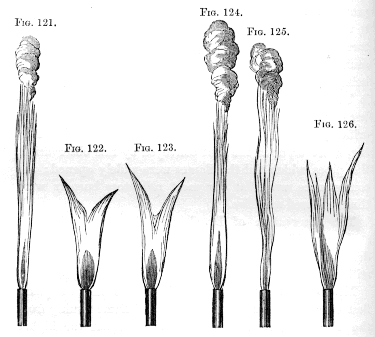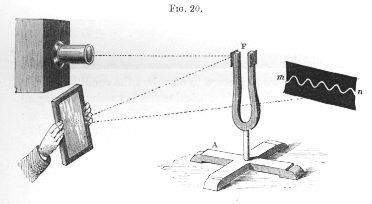Tyndall and Sound
Today, how did people measure sound in the nineteenth century? The University of Houston's College of Engineering presents this series about the machines that make our civilization run, and the people whose ingenuity created them.
A nineteenth-century American professor named Le Conte went to an evening gathering. It was a typical lamplit musical party -- a regular kind of social event in the Victorian age. He wrote about it in the 1858 Philosophical Magazine:
Soon after the music began, I observed that the flame exhibited pulsations that were exactly synchronous with the audible beats. This ... phenomenon was very striking, [especially] when the strong notes of the 'cello came in. It was exceedingly interesting ... how perfectly even the trills ... were reflected on the sheet of flame.
Today our fancy systems for recording and replaying sound are so woven into the fabric of our times that we can hardly picture a world without them. When Le Conte went to that party, we had only the barest means for analyzing or capturing sound. It was with his mind divided between music and physics that Le Conte recognized a new way we might get at the structure of sound.
Soon after, the Irish physicist John Tyndall showed us all a special genius for that kind of observation. He seized upon Le Conte's idea. Tyndall, born in 1820, had started out as an engineer designing railway equipment. He'd eventually gone to Berlin to earn a doctorate in natural philosophy. He came back to London to teach at the Royal Institute. And there he did important formative work in sound, light, heat, electricity, bacteriology, glaciology -- what am I forgetting? His ability was astonishing.
But Tyndall's book on sound reveals his genius as clearly as anything he wrote. It shimmers with highly-honed mechanical means for displaying sound. He develops Le Conte's observation into an eighteen-page section called "Sensitive Naked Flames." He uses flames to measure pitch and tone quality. At one point he stands across the room from a flame and reads to it from a poem by Spenser:
Sweet words like dropping honey she did shed,
And through the pearls and rubies softly brake
A silver sound, which heavenly music seemed to make.
As the words touch the flame, it dances to all the different vowel sounds.
He goes on to reflect light from tuning forks onto moving paper. He gazes at effects of sound on water jets and shallow sand. There is no end to his means. And they're all so direct and palpable. I finally close Tyndall's book -- this wild intermingling of music, phenomena, and poetry -- and I come back to the hi-tech microphone now just four inches beyond my nose.
Suddenly I'm back amid the twentieth-century spawn of Le Conte's and Tyndall's work. Yet it would be a mistake to come all the way back. We cannot afford to forget that this world was built upon Tyndall's intimate interweaving of our minds and our senses.
I'm John Lienhard, at the University of Houston, where we're interested in the way inventive minds work.
(Theme music)
Tyndall, J., Sound: A Course of Lectures Delivered at the Royal Institution of Great Britain. New York: D. Appleton and Company, 1867.
This is a greatly reworked version of Episode 192.

Tyndall illustrates the effects of different vowel sounds on naked flames.
From Sound, 1867

Tyndall shows how to project the motion of a tuning fork on a screen to create a sine wave.
From Sound, 1867